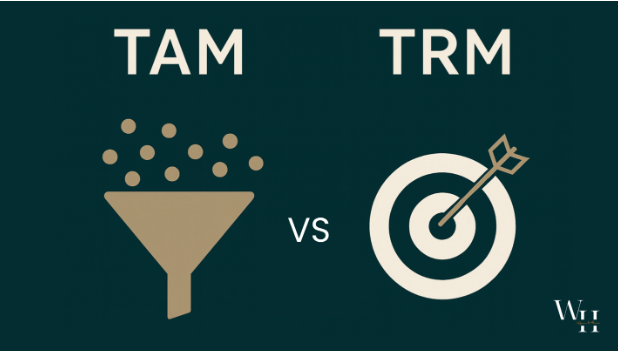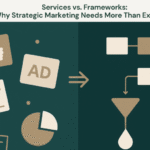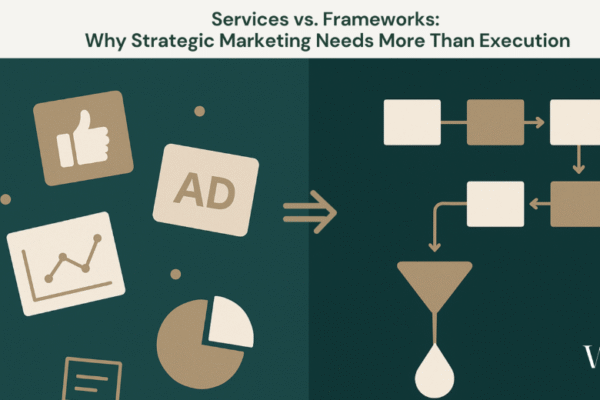Why TAM Misleads and TRM Wins: Rethinking Market Opportunity in Go-to-Market Strategy
I’ll never forget one of my early executive conversations about market strategy. A fellow leader was eager to anchor our growth plans to the concept of Total Addressable Market (TAM). Slide after slide painted a picture of billions in opportunity if only we believed hard enough. But the reality was harder to admit: our product wasn’t built for that broad market. We weren’t anywhere close to serving the TAM, no matter how compelling the story sounded.
That tension stuck with me. Because while TAM makes for impressive fundraising slides, it rarely helps leadership teams make smarter go-to-market decisions. If anything, it can be dangerous luring teams into chasing markets they can’t win, pouring resources into campaigns that stretch too thin and creating a disconnect between product truth and marketing story.
The antidote is what many of us are now calling Total Relevant Market (TRM).
The Problem with TAM
Industry leaders have increasingly questioned the usefulness of TAM in real go-to-market execution. As Forrester has noted, buying group complexity and buyer dissatisfaction are rising, making broad TAM-driven strategies less reliable and more costly to pursue (Forrester, 2024 — viewed September 17, 2025). Others have highlighted how inflated TAM figures often play better in investor theatre than in operational strategy, creating disconnects that erode trust.
TAM assumes your product serves everyone in a broad category.
However:
- It ignores product limitations, compliance constraints and customer readiness
- It encourages inflated narratives that look good for investors but mislead internal teams
- It tempts leaders into broad targeting that drives waste and weakens brand trust
In short, TAM is great theatre, but poor strategy.
Why TRM Creates Clarity
TRM is the market you can actually serve today, with the product and resources you have. Forrester’s GTM research has emphasized the importance of segment-level precision and the shift from “total” to “relevant” as go-to-market models evolve (TaskUs summary of Forrester B2B Summit viewed September 17, 2025). GTMonday has gone further, describing TRM as the foundation for sales success in competitive markets (GTMonday, 2023 accessed September 15, 2025).
TRM is narrower, yes, but sharper:
- Focused: Resources are aimed at where you can realistically compete and win.
- Aligned: Marketing, sales, and product teams work to a shared, honest view of opportunity.
- Credible: Investors, boards, and teams respect a grounded view that acknowledges reality while pointing to a clear growth path.
Far from limiting ambition, TRM builds a stronger foundation for scale.
Product Understanding Matters
This is where product marketing expertise makes all the difference. Having led both product and marketing teams, I’ve seen how critical it is to translate technical reality into market strategy:
- Product limitations: Early versions of financial products, for example, often can’t meet the full compliance scope or feature depth a TAM analysis assumes.
- Product abilities: At the same time, those same products can deliver outsized value for a highly defined, relevant segment.
- Bridging the gap: Product marketers who understand the technical side of back-end systems, regulatory constraints and integration requirements can set more accurate boundaries and craft messaging that wins trust instead of over-promising.
When TRM is built on a foundation of both technical product knowledge and market insight, the strategy is not just focused but also realistic. It respects what the product can deliver today while leaving room to evolve tomorrow.
Moving from TAM to TRM
- Align with product truth – What problems are you really solving right now?
- Define boundaries – Who is excluded (by design, cost, compliance, or capability)?
- Size the TRM – Use credible, data-backed numbers, not inflated hypotheticals. Harvard Business Review has highlighted that credibility in market sizing is just as important as ambition in investor conversations (HBR, 2020 viewed September 17, 2025).
- Build GTM around TRM – Create segment-specific positioning, targeted campaigns, and a roadmap to expand adjacent markets as your product evolves.
Closing Thoughts
Looking back, I realize my hesitation in that boardroom was justified. We didn’t need a fantasy TAM. We needed a grounded TRM to guide our focus and build trust. TAM will always have its place in pitch decks. But when it comes to strategy, leadership teams win when they stop chasing the illusion of “total” and double down on the relevance of markets they can serve today. For founders and investors alike, this is the real work of growth: building with focus, aligning around reality, and scaling step by step with integrity. Ambition doesn’t disappear, it sharpens. A TRM mindset keeps teams honest, resources efficient and brands credible.
If you’re ready to move your strategy from TAM to TRM, explore our GTM Playbook a practical guide to building market clarity and accelerating growth with integrity.












